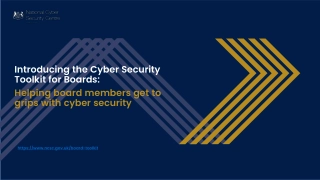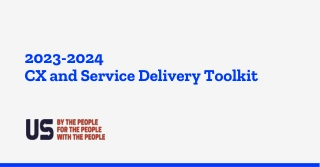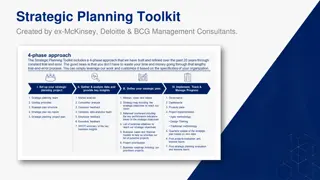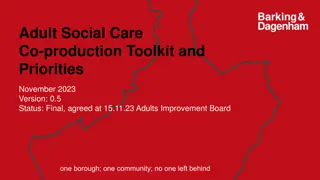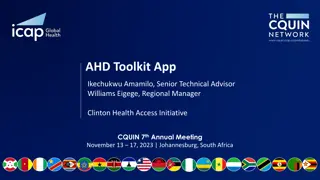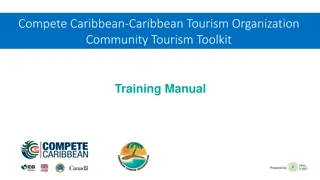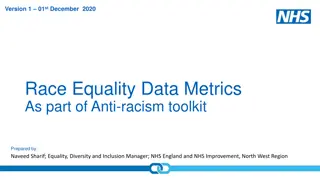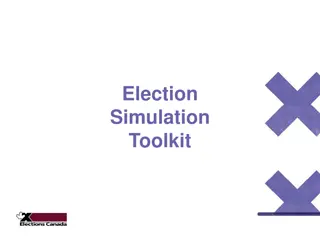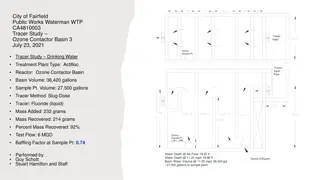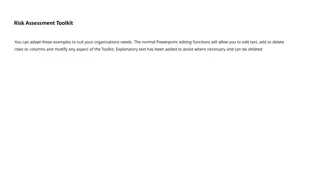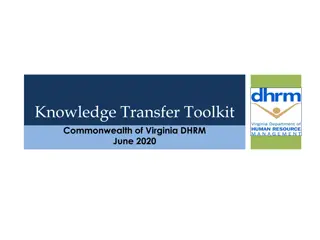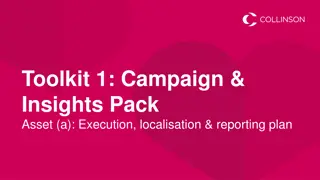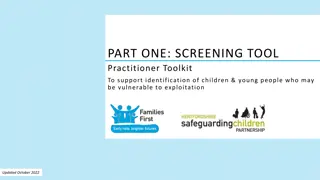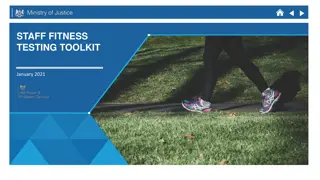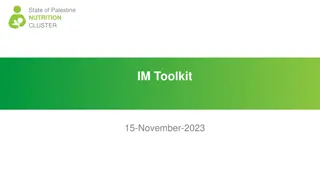
Managing Change and Supporting Teams in Workplace Transformation
Explore a comprehensive toolkit for managing change and supporting team members through the Workplace Transformation Project. Learn about key aspects such as managing team dynamics, overcoming resistance, and adapting to the new work environment. Gain insights on effective communication strategies and preparing yourself and your team for successful change implementation.
Download Presentation

Please find below an Image/Link to download the presentation.
The content on the website is provided AS IS for your information and personal use only. It may not be sold, licensed, or shared on other websites without obtaining consent from the author. If you encounter any issues during the download, it is possible that the publisher has removed the file from their server.
You are allowed to download the files provided on this website for personal or commercial use, subject to the condition that they are used lawfully. All files are the property of their respective owners.
The content on the website is provided AS IS for your information and personal use only. It may not be sold, licensed, or shared on other websites without obtaining consent from the author.
E N D
Presentation Transcript
Managers Toolkit A guide for managing change and supporting team members Date : February 2023 Image result for canada wordmark
Inside this Toolkit * The French version of this document is available here : FR version The Workplace Transformation Project This section provides you an overview of the Workplace Transformation Project, including what is changing for our organization. It acts as a starting point for managing your team through the Workplace Transformation Project. An Overview of Managing Change This section provides you with a basic understanding of the people side of change management, including your role as a people manager, how to communicate change and how to react to change. Preparing Yourself for Change This section is dedicated to you as a people manager. It reviews what you should expect as a people manager and prepares you to support your team through the Workplace Transformation Project. Preparing your Team for Change Once you are prepared for the change, this section provides you with the details required to support team members. This section covers ideas such as overcoming resistance and barriers, as well as dealing with questions and feedback. Change Spotlights This section reviews some of the most discussed changes as part of the Workplace Transformation Project. It reviews our current state, future state, the benefits of this change and tactics to support team members through the transition. Image result for canada wordmark 2
Workplace Transformation Project The Workplace Transformation Project is PSPC and [CLIENT DEPARTMENT] s response to a growing desire for flexibility and agility. It is an office accommodation project based on GCworkplace and is designed to deliver activity-based workplaces through furniture solutions. Based on this definition, employees may perceive that the only changes to their workplace involve space, such as furniture and location. However, the magnitude and reality of the change is more than just the office environment. By adopting GCworkplace, [CLIENT DEPARTMENT] is putting employee choice and mobility first, with changes to how and where we work, how and where we collaborate, and how we support each other in a shared working environment. It also includes updates to our technology, and improved ergonomics and accessibility for all employees. Storage, locker and adjacency requirements may also change to accommodate the new shared workspace. The extent at which we are changing requires your support as a people manager to aid you and your team members through this journey. This toolkit will be your guide through this process. For more information on the Workplace Transformation Project, please click on the link below: Perception Furniture Location Space Ergonomics Charters Policies Work Workstyles Arrangements Accessibility Reality of the Change Storage Etiquette Adjacencies Collaboration Lockers Technology Mobility Processes Flexibility Workplace Transformation Program Gcpedia Inclusivity Image result for canada wordmark 3
Overview of Managing a Team through WTP Our transition to a more modern and efficient workplace will require innovative solutions from both managers and employees to support a positive team dynamic and ensure team members are connected to other colleagues. As a manager, you may be wondering: How can I support myself through the change? Do I know anything about managing change? Will I need to shift my leadership style? Will team dynamics and relationships change? Will this be more work for me? To get started, ask yourself: Do I have a support system of senior leaders and other people managers in place? Do I know what to expect of my role as a people manager? Do I know my current team s behaviours, preferences, and nuances? Have I established a safe and trustworthy space for my team? Have I established regular team and individual touchpoints? If you have answered yes to all the above questions, you are well on your way to supporting your team through our Workplace Transformation. Otherwise, use the tips within this toolkit to get you started. Image result for canada wordmark 4
Your Role as a People Manager People Managers play a critical role in leading and supporting team members through change. Helping employees cope with change means managing fears and anxieties supporting through uncertainty. During the Workplace Transformation Project at [LOCATION], your role as a people manager extends beyond your current daily responsibilities as you begin to communicate, mentor, coach and engage employees through our change journey into a successful adoption and sustainment of our new workplace. As a people manager, you will: 1 2 3 4 Build solid relationships and team dynamics Mentor, coach and engage employees Encourage exploration and performance Communicate clearly and often Image result for canada wordmark 5
Communicating Change The reality of change is that it is continuous and inevitable, which makes it challenging. Most people do not like change as it is disruptive and requires constant effort. Understanding what goes through employee s minds when they are confronted with change will help you better support them and communicate effectively. Effective communication by people managers is necessary to drive a successful change adoption. People managers have five unique and important roles to play in communication: Communicator Share personalized messages with your team members about what is changing and why. Advocate Demonstrate your support and enthusiasm for the change to help others get on board. Coach Teach team members about the change process and any tools and trainings related to change. To stay informed on the change as a people manager, ensure you read all project communications and resources, as well as attend all information sessions. Liaison Provide feedback to the project team and raise any valid concerns from team members. Resistance Manager Note barriers to adoption and manage resistance and rumours as they occur. The more information you have, the more you will be able to share. Image result for canada wordmark 6
Reacting to Change Every individual reacts to change differently. This may be affected by a combination of their understanding of change, their change history, and their capacity to undergo a change. The change curve below demonstrates the transition that all employees can be expected to display employees can start at any point within the curve and can progress and regress in any direction. An employee is in denial Listen, ask questions and explain the how and why of the change Emphasize the importance of transition and encourage them to take the time they need An employee is resisting Performance Commitment Learning how to work with the change Gather resources, ask the project team for help Remain empathetic but be confident in a positive change outcome An employee is exploring Denial Initial shock and disbelief Provide training resources and reading material Hold regular team meetings and invite them to share their excitement with others An employee is committed Exploration Employee understanding, excitement and questioning Resistance Feelings of fear and anger leading to protest Create opportunities for discussion and collaboration, invite all employees to exciting events related to the change Explore ways to improve the transition for others Time Image result for canada wordmark 7
Supporting Reactions to Change Most Common Reactions Strategies to Support I am unsure, feel ill at ease, confused, irritated or fearful Acknowledge team member s feelings and reactions to change. Create a safe space that allows people to adjust at their own pace and where it is acceptable to make mistakes and learn from one another. I cannot accept the change without understanding the transition Acknowledge what is different and how it will feel. Be patient and allow time for people to grieve the current state and accept a new reality. I am not equipped to handle the change, or I don t have the tools, skills or resources needed to change Attend all information sessions and read all communications directed at people managers and employees. Remain engaged on who needs what support and direct them as resources become available. I am not ready for change, but others are Find common experiences among team members and enable them to work collaboratively. Engage early adopters to work through uncertainty. I have too much going on right now Manage change in small increments where possible but prioritize change initiatives as they are introduced by the project team. Keep lines of communication open and celebrate small successes. I will just go back to how things are Provide regular reminders to ensure that instructions, expectations and actions are understood by all employees, and where they can find tools and resources. * Please note that various journeys will be proposed during our A day in the life session in order to explore different possibilities when using your new workspace. Image result for canada wordmark 8
Supporting and Preparing Yourself As a people manager, you play a central role in the overall change management strategy, where your daily responsibilities mainly focus on gathering feedback from your team members, listen and provide answers to their concerns while providing timely information in order to achieve a successful adoption. Preparation is crucial for effective support and a successful adoption. Read carefully the project material and documentation at your disposition to understand and educate yourself, you will consequently gain confidence in communicating the information. Delivering valid information and listening to your colleagues will help reduce resistance making sustaining the change easier. 1 2 3 Prepare your team Preparing yourself to Understand the changes underway and your role Introduce the change to your employees Adapt to the change that is happening to you Support employees through a transition Develop indicators for managing change Reinforce and celebrate success and wins Image result for canada wordmark 9
Tactics to Equip Yourself Early Review all project specific communications, tools and training materials Attend all project specific engagement activities Understand the provided schedule and upcoming milestones impacting your team Attend and leverage existing management network meetings Attend Review Know where all resources are housed such as a MS Teams Channel, website, or newsletter Participate and share in any information gathering activities You Plan Anticipate Establish team member touchpoints Get to know your integrated project team and enabling sector reps Establish a reoccurring team meeting Anticipate team-specific questions and be prepared to ask the project team Anticipate your questions and get answers prior to engaging your team Keep your team charters up to date Image result for canada wordmark 10
Milestones for People Managers 1 Announcement of the project to senior leaders, people managers and employees Employee townhall to provide an overview of the project and upcoming activities Information gathering through design survey and workshops Removal of personal belongings and business assets for all employees Establishing the change agent network Launch communications through website, MS Teams or newsletters 2 Launch of managers toolkit and optional information sessions Announcement of new community norms Launch of team charters and optional information sessions. Launch of training content to all employees Launch of employee toolkit and pre-opening townhall Virtual and physical opening ceremony for our new space 3 Training refresher courses and materials provided Launch of workplace performance survey Pre-Planning & Planning Completed Implementation DATES Post-Occupancy DATES Ensure you display the activities that affect people managers and are specific to your project. Delete this box once you have customized the project milestones under each phase. Image result for canada wordmark 11
The Integrated Project Team Ensure you have adjusted this chart to reflect the Integrated Project Team for your project. Executive Sponsor NAME For general questions about the Workplace Transformation project, project milestones, engagement activities or to obtain more information on how to access tools and resources, please contact EMAIL. Remove or add boxes as necessary, but ensure that contacts represent contributors who can support feedback loops for people managers. Project Sponsor NAME For more information on who should receive feedback, please review dealing with questions and feedback. Project Manager NAME Change Manager NAME Delete this box once you have customized the project org chart. Enabling Sector Representatives Change Agent Network Human Resources NAME IT NAME Change Agent 1 BRANCH NAME Change Agent 2 BRANCH NAME Change Agent 3 BRANCH NAME Information Management NAME Security NAME Image result for canada wordmark 12
Supporting Employees The Building Blocks Supporting your team through change can feel like an overwhelming task, especially when the reality of the change is higher than expected. Here are 8 basic tips that can assist you in supporting your team: 1. Establish trust: create a safe and respectful place to share. 2. Frequent check-ins: set-up times to discuss the change with individuals both formally and informally, as well as a team. 3. Transparency: speak to facts and be honest when you don t know the answer. Support employees through solutioning. 4. Social Interaction: combat anxieties and fears with engaging activities between team members. 5. Rules of engagement: use the correct tools and platforms when communicating and engaging. 6. Empathy: understand the needs of others and be in tune with diversity and inclusivity challenges. 7. Be Intentional: make good use of time, be clear and leverage all resources. 8. Recognition and praise: celebrate small wins for all employees, regardless of their rate of adoption. Establish Trust Transparency Frequent Check-ins Social Interaction Rules of Engagement Empathy Recognition and Praise Being Intentional Image result for canada wordmark 13
Building Team Charters In order to create healthy and inclusive teams, we encourage that managers and employees utilize their Team Charters and make revisions as changes are made to our organization. It is important to remember that Team Charters are influenced by our organizational vision and community norms and should not be in opposition. Team Charters will be an important tool for you as a people manager to outline your expectations for your team. Team Charter Community Norms Communication Styles Work Models Etiquette Security Operating Hours Leadership Styles Examples of considerations when creating and reviewing your Team Charter : Informal communication methods (i.e., scheduling meetings and informal phone calls) Working hours and work model (i.e., expectations of being present) How the team can have fun and celebrate achievements Leadership styles, leadership updates and equitable access to information Facilities Collaboration Celebrations Flexible Working Using Technology Meetings Accessibility Deliverables and Delivery Booking Tools Storage Client Support Project Planning Lockers Support Services Calendars and Emailing More information establishing a team charter will be provided to all people managers. Image result for canada wordmark 14
Managing Relationships and Team Dynamics We understand that one of the biggest concerns teams have with any workplace transformation is the impact to relationships and team dynamics. It is important to acknowledge that working in a shared space and increasing our flexible working arrangements provide new opportunities to foster connections and network with people throughout our organization. If you feel that managing the change has impacted your relationships with your team members, here are a few helpful tactics you can use to get back on track: Be Spontaneous Allow for employees to have conversations not about work. Set aside time at the beginning of meetings for employees to make connections. Include Everyone Encourage feedback and contributions from all team members. Celebrate the small successes of all employees. Build Trust Reassure Others Share what you know and be candid about what you don t know to avoid team members believing that you are withholding information. Create open communication channels, address issues openly and proactively, and don t place blame/isolate team members. Set Expectations Make sure you have established ground rules (Team Charters) through a team collaboration (even new members) Image result for canada wordmark 15
Dealing with Questions and Feedback As a people manager you will have to answer questions from your team this is inevitable and important. Some questions will be simple to answer, while others will be complex, difficult or both. Ultimately, it will be important for you to understand at a minimum the how, where, and who of the Workplace transformation project. C Where can I find the answer to this question? How should I respond to this question? and have empathy. A P S Concern: demonstrate that you understand the reality of the situation Action: highlight your plan and steps you are taking to address the issue. Perspective: ensure the situation is viewed in the context of the bigger picture. Share: only share information that has been provided and factual. Who do I share feedback with? MS Teams Channel, Project Website Newsletters GCpedia GCdocs GCwiki Change Management Network Engagement and Training You Integrated Project Team Change Agents Enabling Sectors Engagement Activities Management Network Meetings Project Manager Project Delivery and Schedule Image result for canada wordmark 16
Managing Resistance and Overcoming Barriers As we begin to transition into our future state, you and your team my encounter management, process, personal and team challenges. Being proactive will enable you to manage this transition effectively and successfully. Overall mitigation strategies Provide opportunities to share Leverage existing solutions Determine a best practice Establish an escalation process It is important to note that all challenges or barriers your team experiences with our workplace transformation does not automatically mean they are actively resisting the change. To address some common challenges, consider applying the following techniques. Challenge or Barrier Impacts to productivity and effectiveness Technique to Overcome Discuss existing protocols, expectations, and how you will provide updates. Management Challenges Measuring employee performance Link performance results to clear measurable commitments related to new tools and processes. Adhering to new policies Ensure that employees are aware of policy changes and have conversations with your team to ensure they are properly trained and are not experiencing a barrier. Image result for canada wordmark 17
Managing Resistance and Overcoming Barriers (contd) Challenge or Barrier Technique to Overcome Challenges Process New process requirements and routines Listen for concerns and use this opportunity to help create more productive and efficient ways of working. New support services requirements (IT, HR, IM, etc.) Learn about new supporting tools and processes to reduce your team s vulnerability with the transition. Challenge or Barrier Technique to Overcome Impacts to life outside of work Use individual touchpoints to determine potential issues and solutions for improved work-life balance. Personal and Team Personal connections with the workplace Empathize with your team and reflect with them that sharing the workplace provides equal opportunities. Challenges Team member isolation and regression Encourage team members to connect and interact regularly outside of team engagements. Impacts to growth and networking Discuss the importance of being a consistent contributor and staying engaged. Loss in interaction and collaboration Leverage communication tools and establish communications protocols. Image result for canada wordmark 18
Change Spotlight: Shared Workspaces What is changing? Shared workstations and no offices Improved variety of open and enclosed workpoints Teams arrange where and when to work Branches and directorates are blended throughout the floor, unless security requirements exist What s happening now? Assigned workstations and offices Lack of workstation variety Teams work in isolated areas Branches/Directorates in dedicated spaces Work location flexibility Benefits Increased liberty to choose where to work Improved mobility, flexibility and equal access to spaces Increase collaboration across teams, branches and departments Movement throughout the day and change in environment both improve wellness Tactics Utilize collaboration tools to coordinate meetings with team members Take advantage of open collaborative workpoints to work with team members Use the dedicated storage for your team, branch or department to store business assets and technology peripherals Image result for canada wordmark 19
Change Spotlight: Activity-Based Working What is changing? Introduction of organizational activity-based working In-person, on-site meetings can occur with clients, guests, customers and the public Improved videoconferencing tools in our enclosed collaboration spaces for hybrid meetings What s happening now? Most employees are working from home unless essential Virtual meetings and phone calls to meet with clients, guests, customers and the public Lack of social interaction between team members Benefits Improved flexibility, mobility and choice Leveraging benefits of working from home such as work-life balance, improved productivity and focus time Remaining inclusive and equitable to team members who enjoy working from home Opportunities for more social interaction, collaboration and networking Tactics Take advantage of your team charter Be intentional in using collaborative tools Always include virtual and remote team members in conversations during meetings Consider that preferences, mandates and external factors may determine where employees want to work Image result for canada wordmark 20
Change Spotlight: An Ecosystem of Spaces What is changing? Introduction of activity-based working Introduction of additional workspaces including GCcoworking sites Employees are welcome to work in different workspaces to suit their needs and the tasks they are completing, where agreed between the employee and their people manager What s happening now? Only working from primary departmental office space or home Lack of diversity and variety in space and location Employees scheduled to be in office or to work from home, depending on the organization Benefits Improved mobility, flexibility and equal access to spaces Increase collaboration across teams and organizations, including networking Movement throughout the day and change in environment both improve wellness Extended service offerings across organizations Tactics Take advantage of your team charter include expectations around using all available workspaces for your organization Be intentional in using collaborative tools Host team engagements in a variety of workspaces where available Consider how external factors might determine where employees want to work Image result for canada wordmark 21
Change Spotlight: Lockers and Storage What is changing? Day lockers available on an as needed basis Digital locks that are easy to set/reset Employees should only bring personal items they need for the day (i.e., lunch, gym bag) Digitization of business assets, files and improved paperless processes What s happening now? Dedicated lockers for all employees Lockers with keys Employees permitted to store and keep personal items in the workplace Paper files are retained and stored in filing cabinets dedicated to each department Benefits Reduces the administrative labor required to manage lockers and keys Allows equal access to lockers for all employees Reduction in the need for storage to prioritize workpoints Digitization allows more people the flexibility to work outside of the office Tactics Take advantage of your team charter include expectations around lockers Use any storage provided to your team to store ergonomic equipment Use coat closets and hooks to store coats, shoes and gym clothes Be intentional in using digital tools such as OneNote and SharePoint to store files. Image result for canada wordmark 22
Change Spotlight: Accessibility and Ergonomics What is changing? Existing duty to accommodate requests are maintained All workstation and meeting room furniture offer ergonomic solutions A variety of ergonomic and soft seating Ergonomic furniture areas will be available in a shared work environment What s happening now? Employees submit duty to accommodate (DTA) requests for ergonomic furniture Current furniture is not flexible and does not support employee wellness Employees store ergonomic furniture and equipment at their workstation Benefits Reduction in the need for employees to submit duty to accommodate requests for sit-stand desks and ergonomic chairs Improved employee wellness for everyone Equal access to a variety of work points in a variety of configurations to improve mobility Tactics Use any storage provided to your team to store ergonomic equipment Understand your team s current DTA requests Encourage employees to use a variety of workpoints in differing configurations (sitting, standing, and reclining) Ensure existing employee ergonomic equipment and furniture if labelled Image result for canada wordmark 23
References/Additional info/Learning Government resources CSPS trainings on virtual/remote work Digital Academy Going Remote Guide Canada.ca tips on working remotely Private sector playbooks Google s Distributed Work Playbooks Microsoft s Hybrid Workplace Flexibility Guide Academic Work Nicholas Bloom Stanford economist known for his RCT research with a call center in China (pre-covid) showing WFH productivity gains and promotion risks. Karen Sobel Lojeski American engineer turned researcher who developed the Virtual Distance Model, which explores how computer mediated interaction affects team relationships and trust. Image result for canada wordmark 24

